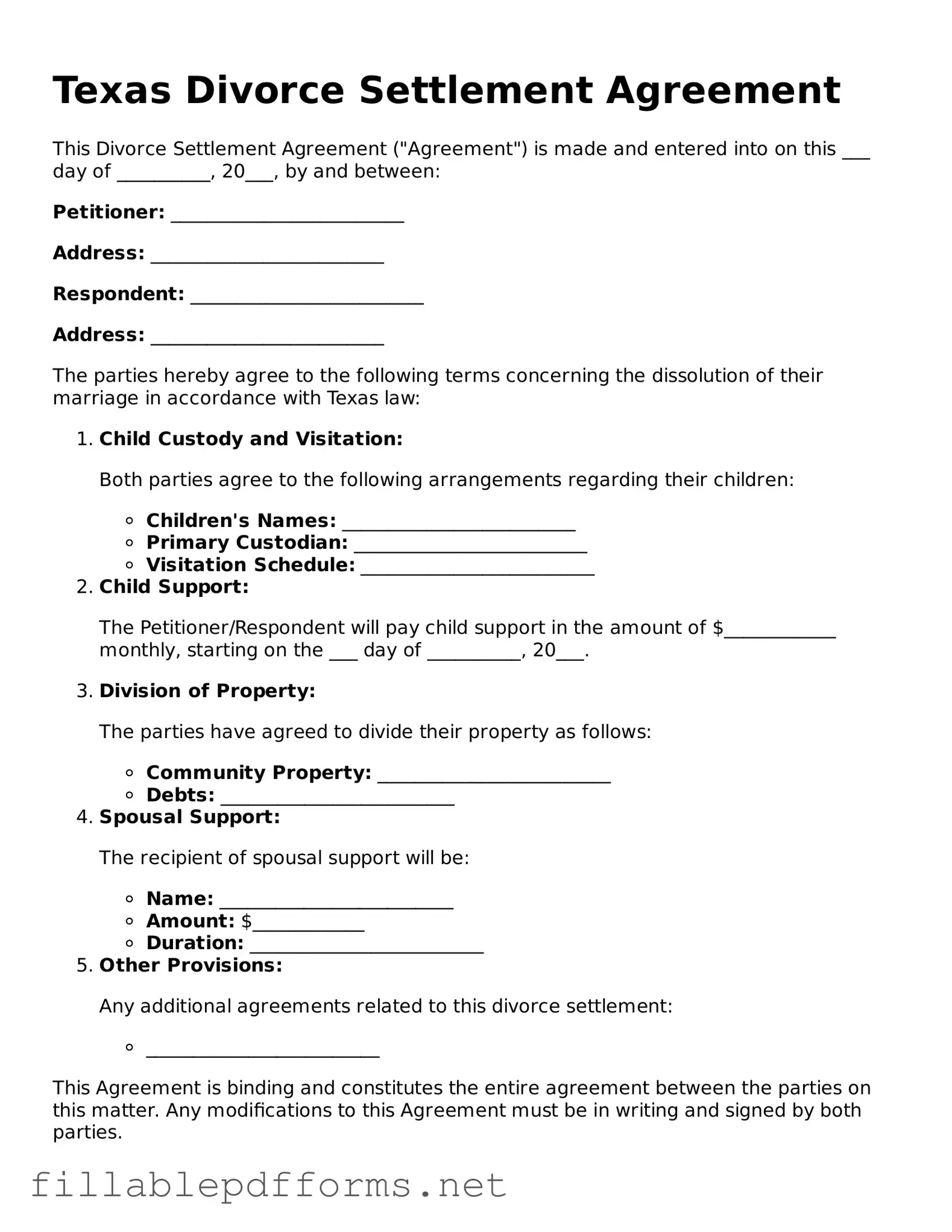Attorney-Verified Divorce Settlement Agreement Form for Texas State
The Texas Divorce Settlement Agreement form is a legal document that outlines the terms and conditions agreed upon by both parties during a divorce. This form serves as a crucial element in finalizing the divorce process, ensuring that both individuals understand their rights and responsibilities. By detailing aspects such as asset division, child custody, and support obligations, it helps facilitate a smoother transition for families moving forward.
Launch Editor Here
